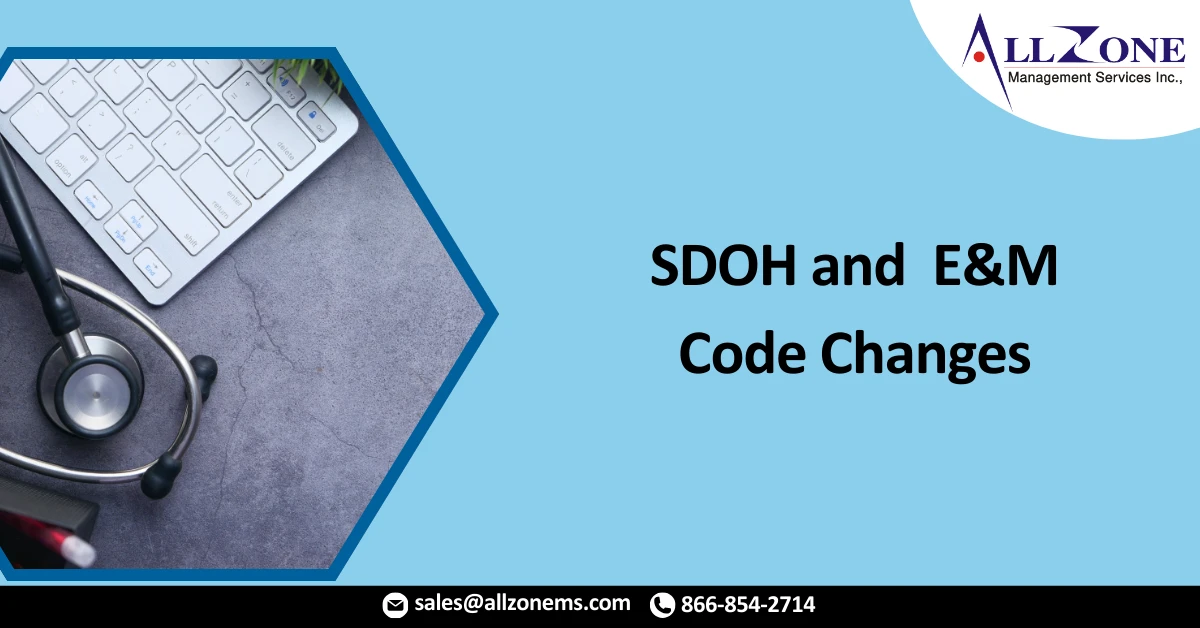New E&M codes will take effect Jan. 21, 2021.
Our number one priority is supporting our healthcare organizations during the COVID-19 pandemic, yet we still must be aware of changes in the way E&M codes are assigned for office visits, based on new guidelines that will take effect on Jan. 1, 2021. Part of being prepared is understanding these changes so we can educate physicians and coders who assign or validate E&M levels and ensure everyone is ready to apply the changes.
The current guidelines and CPT® codes for evaluation and management (E&M) services have been in place for 25 years. E&M services represent approximately 40 percent of all allowed charges under the Medicare Physician Fee Schedule. The New (E&M 99201-99205) and Established (E&M 99211-99215) categories for Office and Other Outpatient Services are used by many physician specialties designated by the Centers for Medicare & Medicaid Services (CMS). In a collaborative effort, the American Medical Association (AMA) developed revisions to these two E&M categories and CMS adopted the revisions into the Nov. 1, 2019 Physician Fee Schedule Final Rule effective January 1, 2021. AMA and CMS share the goal of reducing the documentation burden on physicians to create more time for patient care.
Let’s explore these revisions and learn how social determinants of health or (SDoH) are represented in the revisions to drive appropriate payment and impact the health and well-being of patients.
Here is a summary of the changes to these two E&M categories:
- CPT code 99201 is deleted
- All five E&M levels of services are retained for established patients, E&M codes 99211-99215
- The history and physical exam are no longer components for level selection
- Physicians will now choose the E&M level of service based on:
- Medical decision making (MDM), or
- Total time
- Changes were made to the language and requirements defining the medical decision making (MDM) component
- the number and complexity of problems addressed at the encounter
- amount and complexity of data to be reviewed and analyzed
- the risk of complication and morbidity or mortality of patient management
- Time was revised from face-to-face time to total time
- Finally, the AMA created a new CPT code for Prolonged Services to be used only with 99205 and 99215 when time is the basis used for code selection
Medical decision making includes establishing diagnoses, assessing the status of a condition or conditions, and/or selecting management options. There are four types of medical decision making: straightforward, low, moderate and high. For the moderate level of MDM, E&M codes 99204 and 99214, under the element “risk of complication and morbidity or mortality of patient management” is where the example of “diagnosis or treatment significantly limited by social determinates of health” is found.
The Centers for Disease Control and Prevention (CDC) definition of the social determinates of health is “life enhancing resources, such as food supply, housing, economic and social relationships, transportation, education, and health care whose distribution across populations effectively determines length and quality of life”. These include access to care and resources such as food, insurance coverage, income, housing and transportation. Our role as documentation integrity and coding professionals is to educate physicians and other providers on the importance of complete and accurate documentation and to capture the patient’s story with diagnosis and procedure codes from the documentation. The addition of SDoH into the E&M revisions for 2021 can have a big impact on proper payment, population health, disease management and every person’s well- being.
One example from the CDC states that 1 in 4 adults with advanced chronic kidney disease (CKD) are food insecure – food insecure without hunger, food insecure with moderate hunger and food insecure with severe hunger. ICD-10-CM coding options include Z59.4, lack of adequate food and safe drinking water for reporting food insecurities. Raising awareness of food insecurities, asking, documenting, coding and reporting may help to target interventions to improve the health of people with CKD.
Below are the SDoH Z Code categories from Chapter 21 of ICD-10-CM, Persons with Potential health hazards related to socioeconomic and psychosocial circumstances:
- Z55 – Problems related to education and literacy
- Illiteracy/low-level, schooling availability, failing school, underachievement, discord with teachers
- Z56 – Problems related to employment and unemployment
- Changing of job, losing job, no job, stressful work schedule, discord w boss/co-workers, bad working conditions
- Z57 – Occupational exposure to risk factors
- Noise, radiation, dust, other air contaminants, tobacco, toxic agents in farming, extreme temperatures, vibration, others
- Z59 – Problems related to housing and economic circumstances
- Homeless, inadequate housing, discord with neighbors/landlord, problems w residential living, lack of adequate food/safe drinking water, poverty, low income, insufficient social insurance/welfare support
- Z60 – Problems related to social environment
- Adjustment to life-cycle transitions, living alone, cultural differences, social exclusion and rejection, discrimination/persecution
- Z62 – Problems related to upbringing
- Inadequate parental supervision/control, parental overprotection, upbringing away from parents, child in custody, institutional upbringing (orphan or group home), hostility towards child, inappropriate/excessive parental pressure, child abuse including history of (physical and/or sexual), neglect, forced labor, child-parent conflict
- Z63 – Other problems related to primary support group, include family circumstances
- Spousal conflict, in-law conflict, absence of family member (death, divorce, deployment), dependent relative needing care, family alcoholism/drug addiction, isolated family
- Z64 – Problems related to certain psychosocial circumstances
- Unwanted pregnancy, multiparity, discord with counselors
- Z65 – Problems related to other psychosocial circumstances
- Civil/criminal convictions, incarceration, problems after release from prison, victim of crime, exposure to disaster/war, religious persecution
Jan. 1, 2021 is only nine months away. Will you be ready to help drive awareness of the social determinates of health by incorporating them into your education plan for the 2021 E&M revisions?
For More Information: https://www.icd10monitor.com/social-determinants-of-health-and-2021-e-m-code-changes

